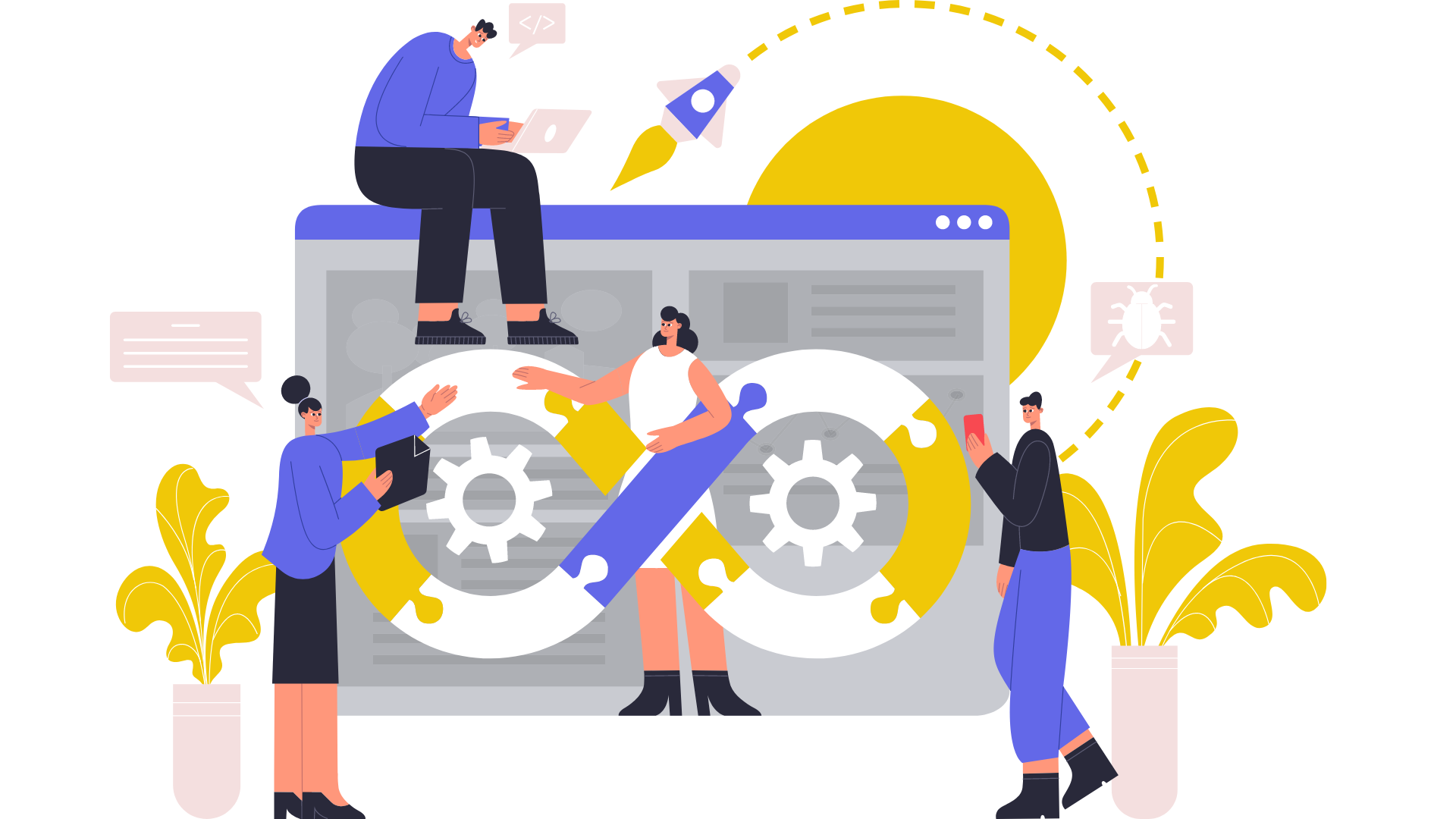If you’re reading this, chances are you’re having some doubts about your current digital asset management system. Maybe your team has developed new workflows your current vendor can’t seem to address, or possibly things never felt fully flushed out post onboarding. Either way, this article is designed to help you figure out if your uncertainty is truly a cause for concern, and if it is, how you can avoid a similar situation going forward.
Signs Your DAM Platform Is Failing
1. Your team can’t find anything
At its core, a digital asset management platform is designed to help users thoughtfully organize their assets to create a centralized asset repository, making those assets easy to find. When team members struggle to quickly locate the files they need, it leads to wasted time, frustration, and a potential breakdown in collaborative workflows, reducing time to market. Moreover, this increases the risk of using outdated or incorrect assets, as team members may resort to using alternative files or recreating content due to the inability to locate the originals in time to meet deadlines. This not only disrupts the seamless flow of work but also diminishes the overall value and purpose of investing in a digital asset management system.
Closely related to the topic of findability is facial recognition and advanced AI tools. Using these tools can help save your team time by easing the burden of manually entering metadata on each asset and in turn, creating quick search results. If your current DAM software lacks these features you’re missing out on massive productivity boosts and it may be time to explore more advanced solutions that can improve asset organization and categorization.
What’s the cost of not finding assets?
If you struggle with quickly finding assets, chances are it’s costing you more than you think. Let’s say you spend on average four minutes to find something in your DAM platform, that may not seem like much. But if you perform 15 searches a day, you’re now looking at 45 minutes a day just to find the assets you need. That may not sound terrible, but this is not a linear problem, this pain will be felt exponentially. What happens as your organization grows to a team of 10 designers? Your team is now spending 7.5 hours a day on search alone. Now look at your headcount over the next three years, is this something your team can afford?
2. Teams are using the wrong assets
Without robust permissions and Digital Rights Management (DRM) tools, your team may risk using outdated or incorrect assets. A digital asset management solution lacking advanced permissioning tools presents a substantial risk to the integrity and legality of asset usage within an organization. Best case, they use wrong assets that you still have rights to. Those with outdated branding that hurt a campaign, or a file format that doesn’t align with the distribution channel. Permissions are crucial for ensuring that team members access and utilize only the approved assets they have rights to, safeguarding against unauthorized use and potential legal ramifications. Advanced permissioning tools play a pivotal role in maintaining order, compliance, and security within a digital asset management system.
3. Your team doesn’t use the DAM
A user-friendly DAM system encourages adoption. If your team finds the system challenging to navigate, it’s time to reassess the usability of your current platform. The success of DAM software hinges on its accessibility, and if the user interface is convoluted or challenging to navigate, team members are less likely to engage with the platform. This can lead to the creation of a shadow DAM ecosystem, where assets are not tracked for sharing or outdated assets can remain in circulation. An easy-to-use interface not only encourages users to embrace the DAM system but also enhances their overall experience, fostering a more efficient workflow. When a DAM platform is tailored to the specific needs of its users, it becomes a tool that seamlessly integrates into their daily tasks, increasing productivity and collaboration. On the contrary, a cumbersome interface can lead to frustration, decreased efficiency, and potential resistance to adopting the system altogether.
4. Your platform can’t scale
A digital asset management platform that is not scalable poses a significant threat to an organization’s ability to remain productive and grow. In the dynamic landscape of digital assets and evolving business requirements, a platform must possess the scalability to accommodate the increasing volume and complexity of assets over time. Without a strong foundation for scalability, organizations may find themselves outgrowing their DAM system, resulting in operational inefficiencies, such as not being able to use the tools your team counts on, or being locked into to a single cloud provider. This is a path that typically leads to migration. Choosing a DAM software vendor with a scalable architecture is not just about meeting current demands but future-proofing the organization against evolving requirements. A platform that can effortlessly grow alongside the team ensures long-term viability, enabling organizations to focus on their objectives without being constrained by limitations in their digital asset management software.
5. Your system doesn’t have APIs
Integrating with other tools is vital for a seamless workflow. Verify that your DAM system supports the necessary APIs to connect with your existing tools and technologies. The absence of essential APIs in a vendor’s offerings can severely hinder an organization’s ability to seamlessly integrate the DAM platform with the diverse array of tools and applications crucial to its workflows. APIs serve as the backbone for interoperability, enabling the DAM system to integrate and exchange data with the tools your team relies on to get its work done. Without the necessary APIs, teams may face integration challenges, leading to siloed information, manual data transfers, and increased likelihood of errors.
Ways to be successful moving forward
Any of this hit home with you? If you’re still reading, it’s safe to assume your current DAM platform is no longer working for your team. So if a migration is in order, besides finding a better product fit, your team can help set up your next deployment for success by learning from your past implementation to figure out what went wrong and ensure your next platform is a success. Migration doesn’t have to be a scary word, but before you migrate, ask your teams the following questions to ensure your next implementation goes smoothly.
1. What went wrong in your previous DAM deployment?
Talk to your team and conduct post mortem interviews. If your last DAM system failed, why did it fail? What did your team implement that was clunky or cumbersome? What tools didn’t you implement that would’ve made a big difference in achieving your workflows? What worked? What didn’t? Was it the platform, or lack of support in configuring it, or a little bit of both? Knowing what went wrong in your previous deployment will help you to avoid the same mistakes going forward.
2. What problems are we trying to solve with DAM?
When talking to your teams, find out the details behind their workflows. Oftentimes organizations go to vendors asking to see specific features or functionality. “Can I see how your system handles workflows?” What they should be asking is, “We have an internal user who is trying to upload an asset, and then distribute that asset internally to gather feedback, and then finally to the client, who will be an external user, but needs to provide feedback as well, or sign off. Can you show me how your system can handle that?”
Try to get a clear understanding of the problems you’re trying to solve, rather than getting hung up on a checklist of features. If DAM software is the answer, what is the question? Having clearly defined use cases will help you further understand which features or integrations you need to implement to be successful. Have an understanding of the workflows you’ll need to implement and make sure you’re moving forward with a vendor that can handle the scale and complexity of the actions your team’s needs to implement and automate.
3. Have we taken inventory of your digital assets?
Evaluate why assets in your previous system were challenging to find. Was it a lack of search functionality, metadata, or a flawed taxonomy? Look for a system that can help you tag assets quickly with AI auto-tagging. Also look into a DAM platform that allows you to develop your own taxonomy, so your team has more flexibility when it comes to cataloging and categorizing assets. If metadata wasn’t an issue, perhaps there was a problem finding assets because your last system didn’t support work-in-progress assets and so large parts of your asset repository were siloed, with some teams working locally and others using the DAM platform. Did you pay to store assets that no one ever used? If that’s the case, look for solutions with cold storage or archival options. Or ask if your new vendor can help bring new life to unused or overused assets by changing up backdrops or other design elements with generative AI tools.
4. Do we need professional eexpertis?
If you’ve talked to your team, but you still can’t seem to figure out where your last implementation went wrong, perhaps it’s time to call on a professional. Sometimes it can be tough to see the problems when you’re so close to it. An outside perspective in the form of a DAM consultant could be what your team needs to help you find the holes in your previous deployment and help ensure you don’t repeat the same mistakes. Consultants can also help your team gain insights into best practices for your industry.
5. Are we thinking in stages?
Trying to implement an enterprise DAM platform in a short period of time can often cause more problems that it alleviates. DAM is core to your organization’s workflows, so take time in implementing it the right way. Avoid overwhelming your team by implementing the DAM system in stages. Set achievable goals, focusing on getting up and running before integrating advanced features. Approaching the implementation of a digital asset management platform through a tiered or staged deployment strategy can offer a more strategic and manageable path to success. In the initial stage, focus can be placed on getting the DAM system up and running smoothly, ensuring that the core features meet immediate needs. Subsequent stages can then address more advanced integrations, workflows, and enhancements. This tiered deployment not only minimizes disruption to daily operations, but also provides opportunities for continuous feedback and adjustments.
Next steps
So now you’ve determined you need to migrate to meet the needs of your organization and you have an understanding of what went wrong in your previous DAM software deployment. How do you make sure you pick the right platform this time around? Here’s a list of things to look for:
What to look for in a new vendor
1. Compatibility with your environment:
Before committing to a vendor, verify their compatibility with your existing infrastructure and technology stack. Ensure the vendor can deploy their solution seamlessly within your preferred cloud storage provider. Compatibility issues can lead to integration challenges and downtime, so confirming compatibility upfront is essential for a smooth transition.
2. Proven track record of DAM migrations:
When evaluating a potential vendor’s track record, look for evidence of successful migrations similar in scope and complexity to your own project. Requesting references from past clients can provide valuable insights into the vendor’s reliability and competence. A vendor with a solid track record demonstrates their ability to deliver results consistently, making them a more trustworthy choice for your migration needs.
3. A migration plan:
A comprehensive migration plan should outline the step-by-step process of transferring your digital assets to the new system. Evaluate the vendor’s plan to ensure it aligns with your goals and timelines. Look for clarity in how they intend to utilize tools and resources to execute the migration efficiently. A well-defined plan not only instills confidence in the vendor’s capabilities but also serves as a roadmap for a successful migration project.
4. Similar clients and workflows:
Selecting a vendor with experience in your industry and familiarity with similar workflows can expedite the implementation process. Look for case studies or client testimonials that highlight the vendor’s success stories in your specific sector. A vendor with industry-specific expertise understands the unique challenges and requirements of your organization, positioning them to deliver tailored solutions for a smoother transition.
5. Support for growth:
Beyond the initial migration, consider a vendor’s ability to support your organization’s long-term growth. Look for vendors that offer ongoing support through a dedicated Customer Success Management (CSM) team. A proactive approach to customer success ensures that your evolving needs are met, whether it’s scaling the system to accommodate growth or addressing emerging challenges and new technologies. Choosing a vendor committed to supporting your growth ensures a sustainable and successful partnership over time.
While evaluating vendors, pay attention to your intuition. If something feels off or if you have doubts about a vendor’s capabilities or intentions, don’t ignore them. Trust your instincts and don’t hesitate to ask probing questions or seek clarification. Look for a vendor that feels like a good cultural fit for your organization. If you feel your team is making another mistake, push back when necessary, and emphasize the potential impact on your organization’s bottom line.
Migration is not an easy decision to make, so make sure your next DAM platform is one that can meet your team’s needs for years to come. For Orange Logic, migration is a common journey for our clients, with a staggering 83% having transitioned from other platforms, with 100% retention rate across this group of second and third-time DAM buyers. This statistic speaks volumes about Orange Logic’s expertise in handling migrations and meeting their workflow needs post migration.
To learn more about how Orange Logic helps you migrate, schedule a call today!
Publisher: Source link











